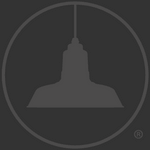- Lighting
- LED Lighting
- Quick Ship
- Home Goods
-
Sale
Our most cost-conscious collection, capture the look you love without breaking the bank!
-
Inspiration
- Professional Login
Hand-crafted sign lighting inspired by early 20th century farm lights. Easy to customize with shade style, finish color, and gooseneck arm options, these sign lights bring both character and illumination to storefronts and other commercial spaces, as well as to residential settings.
Read More »What is Sign Lighting?
With the goal of illuminating outdoor signs at gas stations, grocery stores, and other businesses, traditional sign lighting originated in the early 20th century. To brighten these surfaces, sign lights mount rounded angle shades to curved gooseneck arms. By incorporating numerous angles and options for the gooseneck arm, sign lights deliver the perfect amount of light exactly where it’s needed. This establishes a brighter, more welcoming outdoor environment and helps a business’s sign and logo stand out at night.
Although first created for practical purposes, their timeless aesthetic has made sign lights a favorite for modern commercial buildings. Business owners and designers who desire extra touches of character in their outdoor spaces incorporate these lights as decorative alternatives to more utilitarian sign options.
As use of sign lighting remains popular, new designs have emerged to reflect the latest technological advances. To increase their functionality, these commercial sign lights integrate hyper-efficient LED drivers, establishing some of the most versatile contemporary fixtures available.
Uses for Sign Lights
Most sign lights are rated for installation in both interior and exterior settings. While these fixtures are still used to accentuate signs, creative business owners and designers, along with some homeowners, have discovered numerous alternative applications for sign lights.
Common Outdoor Applications for Sign Lights
- Illuminating decorative awnings and walls
- Accentuating outdoor murals and other unique design features
- In residential settings, brightening address signs and numbers
- And brightening signs, logos, and other corporate markings
Interior Sign Lighting Applications
- Highlighting menu boards in restaurants, bars, bakeries, and coffee shops
- Drawing attention to products on the shelves in retail settings
- Emphasizing artwork, indoor murals, and other design features
While other more utilitarian sources of light fulfill a similar function, sign lights provide the extra aesthetic details and character needed for an elevated curb appeal. With endless combinations of finish colors, arm styles, and other customization accessories, commercial buildings can easily integrate fashionable sign lights into their interior and exterior spaces.
